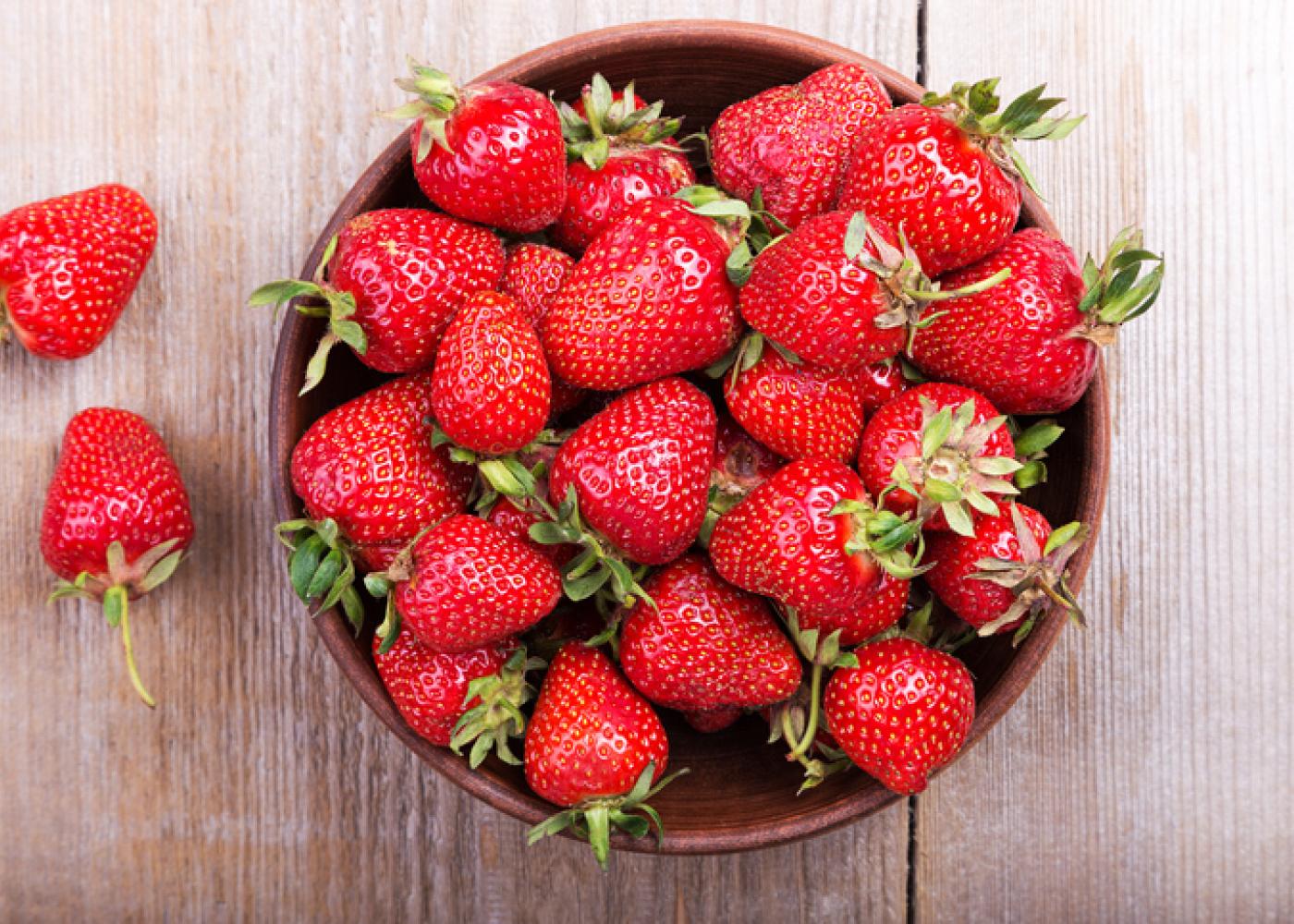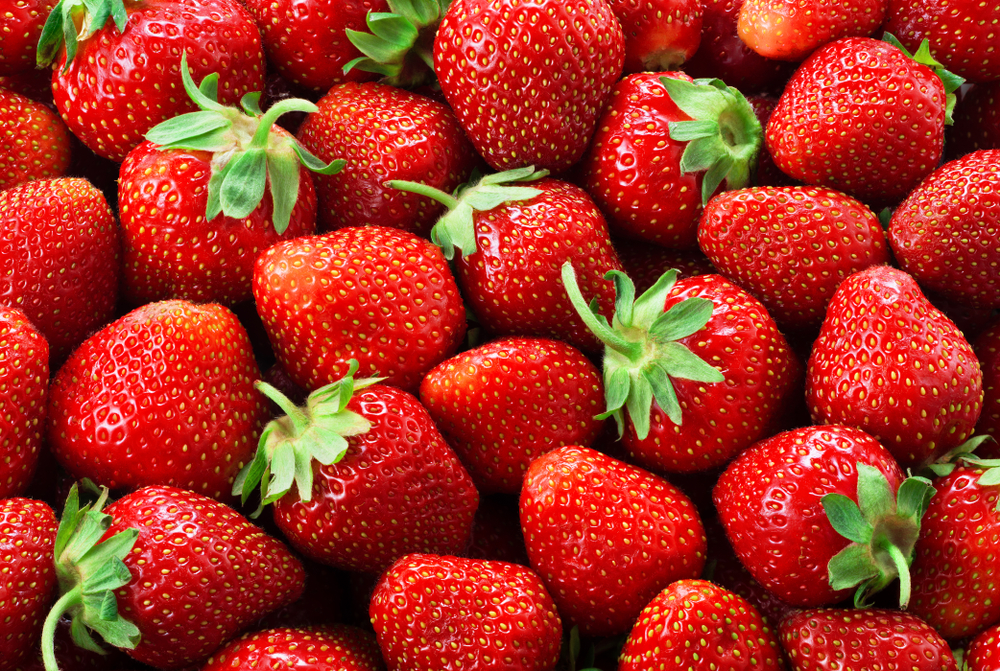Benefit Of Eating Strawberry
Description and Short Information
The strawberry (Fragaria ananassa) originated in Europe in the 18th century.
It is a hybrid of two wild strawberry species from North America and Chile.
Strawberries are bright red, juicy, and sweet.
They’re an excellent source of vitamin C and manganese and also contain decent amounts of folate (vitamin B9) and potassium.
Strawberries are very rich in antioxidants and plant compounds, which may have benefits for heart health and blood sugar control (1 , 2 ).
Usually consumed raw and fresh, these berries can also be used in a variety of jams, jellies, and desserts.
This article tells you everything you need to know about strawberries.
Nutrition facts
Strawberries mainly consist of water (91%) and carbohydrates (7.7%). They contain only minor amounts of fat (0.3%) and protein (0.7%).
The nutrients in 3.5 ounces (100 grams) of raw strawberries (3 ) are:
- Calories: 32
- Water: 91%
- Protein: 0.7 grams
- Carbs: 7.7 grams
- Sugar: 4.9 grams
- Fiber: 2 grams
- Fat: 0.3 grams
The most abundant vitamins and minerals in strawberries are:
- Vitamin C. Strawberries are an excellent source of vitamin C, an antioxidant necessary for immune and skin health (
7 ,8 ). - Manganese. Frequently found in high amounts in whole grains, legumes, fruits, and vegetables, this trace element is important for many processes in your body (
9 ). - Folate (vitamin B9). One of the B vitamins, folate is important for normal tissue growth and cell function — and fundamental for pregnant women and older adults (
10 ,11 ,12 ). - Potassium. This mineral is involved in many essential body functions, such as regulating blood pressure (
13 ,14 ).
To a lesser extent, strawberries also provide iron, copper, magnesium, phosphorus, and vitamins B6, K, and E.
SUMMARYStrawberries are a good source of vitamin C, manganese, folate (vitamin B9), and potassium. They contain small amounts of several other vitamins and minerals.

Carbs
Fresh strawberries are very high in water, so their total carb content is very low — fewer than 8 grams of carbs per 3.5 ounces (100 grams).
The net digestible carb content is fewer than 6 grams in the same serving size.
Most of these berries’ carbs come from simple sugars — such as glucose, fructose, and sucrose — but they also contain a decent amount of fiber.
Strawberries have a glycemic index (GI) score of 40, which is relatively low (4).
This means that strawberries should not lead to big spikes in blood sugar levels and are considered safe for people with diabetes.
Fiber
Fiber comprises around 26% of the carb content of strawberries.
One 3.5-ounce (100-gram) serving of strawberries provides 2 grams of fiber — both soluble and insoluble.
Dietary fibers are important to feed the friendly bacteria in your gut and improve digestive health. They are also useful for weight loss and can help prevent many diseases (5 , 6 ).
SUMMARYStrawberries’ carbs consists mainly of fibers and simple sugars. They have a relatively low GI and should not cause big spikes in blood sugar levels.
Strawberries are loaded with antioxidants and beneficial plant compounds, including:
- Pelargonidin. The main anthocyanin in strawberries, this compound is responsible for the bright red color (15).
- Ellagic acid. Found in high amounts in strawberries, ellagic acid is a polyphenol antioxidant that may have many health benefits (16).
- Ellagitannins. Related to ellagic acid, ellagitannins are converted to ellagic acid in your gut (16).
- Procyanidins. These are antioxidants commonly found in strawberry flesh and seeds that may have beneficial health effects (
17 ,18 , 19).
Anthocyanins
More than 25 different anthocyanins have been found in strawberries. Pelargonidin is the most abundant (15, 20).
Anthocyanins are responsible for the bright colors of fruits and flowers.
They are usually concentrated in the skins of fruit, but berries — such as strawberries — also tend to have anthocyanins in their flesh.
Anthocyanin content is usually proportional to color intensity, increasing greatly as the fruit ripens (21 , 22 ).
Anthocyanin-rich foods are associated with numerous health benefits, especially regarding heart health (23 , 24 ).
Ellagitannins and ellagic acid
Strawberries are consistently ranked among the top sources of phenolic antioxidants — with levels 2–11 times greater than other fruits (25 , 26, 27 ).
Ellagitannins and ellagic acid comprise a large part of these antioxidants in strawberries (28 ).
They have received considerable attention and have been linked to numerous health benefits. This includes fighting bacteria and a reduced risk of cancer (29 , 30 , 31 ).
The main ellagitannin in strawberries is sanguiin H-6 (1 ).
SUMMARYStrawberries contain high amounts of beneficial plant compounds and antioxidants, such as pelargonidin, ellagic acid, ellagitannins, and procyanidins.
Strawberries may improve heart health, lower blood sugar levels, and help prevent cancer.
Heart health
Heart disease is the most common cause of death worldwide.
Studies have found a relationship between berries — or berry anthocyanins — and improved heart health (21 , 34 , 35 , 36 ).
Large observational studies in thousands of people link berry consumption to a lower risk of heart-related deaths (37 , 38 , 39 ).
According to a study in middle-aged people with well-established risk factors for heart disease, berries may improve HDL (good) cholesterol, blood pressure, and blood platelets function (40 ).
- improve blood antioxidant status
- decrease oxidative stress
- reduce inflammation
- improve vascular function
- improve your blood lipid profile
- reduce the harmful oxidation of LDL (bad) cholesterol
The effects of freeze-dried strawberry supplements on type 2 diabetes or metabolic syndrome have been studied intensely — mainly in overweight or obese individuals.

Strawberries are usually well tolerated, but allergy is fairly common — especially in young children.
Strawberries contain a protein that can cause symptoms in people who are sensitive to birch pollen or apples — a condition known as pollen-food allergy (66 , 67 , 68 ).
Common symptoms include itching or tingling in the mouth, hives, headaches, and swelling of the lips, face, tongue, or throat, as well as breathing problems in severe cases (69 ).
The allergy-causing protein is believed to be linked to strawberries’ anthocyanins. Colorless, white strawberries are usually well tolerated by people who would otherwise be allergic (70 ).
SUMMARYStrawberry allergy is rather common, especially among children. Individuals who are sensitive to birch pollen or apples may experience symptoms after consuming strawberries.



![DOWNLOAD NEED FOR SPEED MOST WANTED [2012] FOR FREE [TORRENT DOWNLOADS]](https://blogger.googleusercontent.com/img/b/R29vZ2xl/AVvXsEiSJIDhzEyIzdDvxDsBj2A8LyZbNFPq_fJg3UO74HuNTwaASMq6TIQZv5icqw1THvLLis-WV0487RlLWWNMKLmxnvzGB7k7MJhemtJ51rIoGyq40KlBXAZgqmyLTEvOXtniBMs3PAVUFrQ/w680/maxresdefault+%25283%2529.jpg)



ReplyDeleteI read your post, it gives a really informative information about Augmented Realty App Development Online